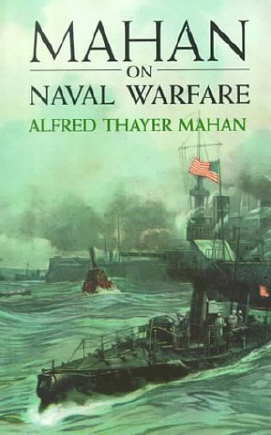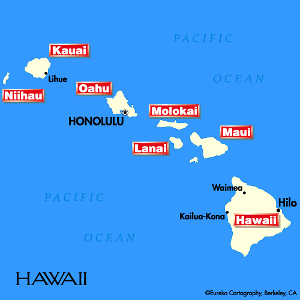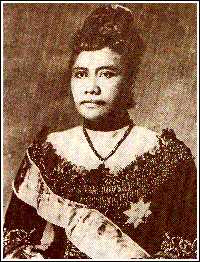Multiple Response
Identify one
or more choices that best complete the statement or answer the question.
|
|
|
Imperialism
Imperialism is the policy in which stronger nations extend their economic, political,
or military control over weaker territories
EUROPEAN IMPERIALISM
European
nations had been establishing colonies for centuries . By the late 19th century, Africa had emerged
as a prime target of European expansionism . Britain, France, Belgium, Italy, Germany, Portugal, and
Spain competed for African raw materials and markets .The European countries were industrial nations
and needed the raw materials from Asia and Africa to keep their industries going. These ambitious
nations carved up Africa and distributed control of the pieces among themselves.
By the early
20th century, only Ethiopia and Liberia remained independent.The rest of Africa had been divided into
European colonies . Americans watched as Great Britain acquired territory not only in Africa but in
Asia and the Pacific as well. Soon the expression "The sun never sets on the British
Empire" became astonishingly accurate . During the reign of Queen Victoria (1837-1901), Britain
built an empire that included a quarter of the world's land and people
.
| JAPANESE
IMPERIALISM
Imperialism also surfaced in parts of Asia during this period. In its
late-19th-century reform era, Japan replaced its old feudal order with a central government modeled
on the bureaucracies of Western nations . Hoping that military strength would bolster
industrialization, Japan joined European nations in their imperialist competition in China in the
1890s. Although the United States did not seek colonies in Asia, it did compete with other nations to
expand trading opportunities with China. | | |
|
|
|
1.
|
_____is the policy in which
stronger nations extend their economic, political, or military control over weaker
territories
|
|
|
2.
|
Why did the European nations
want to colonize Africa?
|
|
|
3.
|
Which statement is
true?
|
|
|
4.
|
What country was the leading
imperial power in Africa and Asia in the late 1800’s?
|
|
|
5.
|
In the late 1800’s Japan
can best be described as
|
|
|
American
Imperialism???
Most Americans
gradually warmed to the idea of expansion overseas . With a belief in manifest destiny, they already
had pushed the U .S. border to the Pacific Ocean . Manifest Destiny was a believe that the
United States were destined to reach from the Atlantic to the Pacific ocean.
Three factors
fueled the new American imperialism : (1) economic competition among industrial nations ; (2)
political and military competition, including the creation of a strong naval force; and (3) a belief
in the superiority of European countries and the United States.
Of course many social
scientists would argue that America was only doing what all nations do, she was acting in her own
self interest.
| |
|
|
|
6.
|
What was the belief that the
U.S. should reach from the Atlantic to the Pacific oceans called?
|
|
|
7.
|
Though America did not own any
territory in Africa or Asia in the late 1800’s, it had imperialist
tendencies
|
|
|
A THIRST FOR NEW MARKETS
In
the United States, imperialism had economic roots, just as it did in Europe and Japan. Advances in
technology enabled American farms and factories to produce far more than American citizens could
consume. Now the United States needed raw materials for its factories and new markets for its
manufactured goods. Imperialists viewed foreign trade as the solution to overproduction and the
related problems of unemployment and economic depression. Indiana senator Albert J. Beveridge, a
staunch imperialist, defended the pursuit of new territories on economic grounds.
By the turn
of the century, the United States had started to fulfill Beveridge's goals. American exports,
which had totaled $234 million at the end of the Civil War, rose to $1.5 billion by 1900. By
achieving a favorable balance of trade (exporting more than it imported), the United States had
become a leading economic power.
| |
|
|
|
8.
|
By the turn of the century,
American imperialist ideas were based mostly on
|
|
|
9.
|
By the late 1800’s,
America
|
|
|

| DESIRE FOR MILITARY
STRENGTH
Seeing that other nations were establishing a global military presence, American
foreign-policy experts advised that the United States build up its own military strength . Admiral
Alfred T. Mahan, president of the Naval War College in Newport, Rhode Island, had become one of
the most outspoken advocates of American military expansion .
In The Influence of Sea Power
upon History, 1660-1783 (1890), Mahan argued for a strong U.S . navy to defend the peacetime shipping
lanes essential to American economic growth . He said the nation also needed strategically located
bases where its fleets could refuel . Mahan urged the United States to develop a modern fleet,
establish naval bases in the Caribbean, construct a canal across the Isthmus of Panama, and acquire
Hawaii and other Pacific islands.
The United States built nine steel-hulled cruisers between
1883 and 1890. The construction of modern battleships such as the Maine and the Oregon transformed
the country into the world's third largest naval power. With a modern fleet, the United States
set out to accomplish the protectionist goals Mahan had recommended. | | |
|
|
|
10.
|
Admiral Alfred Mayhan argued
that America needed a strong navy to
|
|
|
11.
|
Which statement is
true?
|
|
|
12.
|
In the United States,
battleships are named after
|
|
|
The
United States Takes Hawaii

The Hawaiian Islands had been economically important to the United States for
nearly a century. Since the 1790s, American merchants had stopped there on their way to China and
East India. In the 1820s, Yankee missionaries founded Christian schools and churches on the islands.
Next came sugar merchants, who eventually changed the Hawaiian economy.
HAWAII'S ECONOMY
In the mid-19th
century, American-owned sugar plantations accounted for about three-quarters of the islands'
wealth . Plantation owners imported thousands of laborers from Japan, Portugal, and China. By 1900,
foreigners and immigrant laborers outnumbered native Hawaiians about three to one .
Planters
profited from close ties with the United States . An 1875 treaty allowed the sale of Hawaiian sugar
in the United States without a duty. In 1887, business leaders in Hawaii forced King Kalakaua to
change Hawaii's constitution to grant voting rights only to wealthy landowners . This change
basically gave control of Hawaii's government to the American businessmen. Also in 1887, the
United States strong-armed Hawaii into signing a treaty allowing the construction of an American
naval base at Pearl Harbor.
The McKinley Tariff of 1890 provoked a crisis by eliminating the
duty-free status of Hawaiian sugar. As a result, Hawaiian sugar growers faced competition in the
American market, especially from Cuban sugar. American planters in Hawaii called for the United
States to annex the islands so they wouldn't have to pay the
duty.
| |
|
|
|
13.
|
The first Americans on Hawaii
tried to
|
|
|
14.
|
Why did the Americans bring
Japanese, Chinese and Portuguese workers into Hawaii
|
|
|
15.
|
By the turn of the century the
economy of Hawaii was based mostly on
|
|
|
16.
|
The main interest of America in
Hawaii was
|
|
|
17.
|
Why did the plantation owners
want close ties with the United States?
|
|
|
18.
|
The U.S. got Hawaii to change
its constitution so
|
|
|
19.
|
As a result of changes in the
Hawaiian constitution in 1875
|
|
|
20.
|
Where did the U.S. build
it’s first military base in Hawaii?
|
|
|
21.
|
At the time, foreign countries
had to pay an import duty (tax) to import products into the United States. Why did the sugar
plantation owners want the U.S. to annex Hawaii to be part of the U.S.?
|
|
|
22.
|
What did the McKinley Tariff of 1890 do
|
|
|

Queen
Liliuokalani
THE
QUEEN IS DEPOSED
When King Kalakaua died in 1891, his sister, Liliuokalani, became queen.
Liliuokalani proposed a new constitution that would remove property qualifications for voting . This
change would have restored political power over the islands to native
Hawaiians. | To prevent this from happening, business groups-with the
help of U.S. ambassador John L,. Stevens-organized a revolution against the queen . On the night of
January 16, 1893, the U .S .S . Boston appeared in Honolulu harbor. Following Stevens's orders,
American marines moved ashore, supposedly to protect American lives and property. At the same time,
volunteer troops took over the government building, imprisoned the queen in her palace, and
established a provisional government with Sanford B. Dole as president.
REPUBLIC OF HAWAII
Stevens immediately
recognized the provisional government, which sent a commission to Washington, D.C. and asked that the
islands be annexed. Later a U.S. special investigator blamed Stevens for the
revolution,
President Cleveland directed that the queen be restored to her throne . When Dole
refused to surrender power, Cleveland-unwilling to use force formally recognized the Republic of
Hawaii, but he refused to consider annexation unless a majority of Hawaiians favored it.
In
1897, William McKinley, who favored annexation, succeeded Cleveland as president. On August 12, 1898,
Congress proclaimed Hawaii an American territory, without Hawaiians having had the chance to vote on
annexation . At the same time, Cuba, an island much closer to the U.S . mainland, attracted U.S.
attention | | |
|
|
|
23.
|
What did the U.S. Marines do in
regards to Queen Liliuokalani?
|
|
|
24.
|
What did Queen
Liliuokalani want to
do?
|
|
|
25.
|
Who organized a revolt against
Queen Liliuokalani?
|
|
|
26.
|
The text suggests that Queen
Liliuokalani was deposed
|
|
|
27.
|
Which president wanted to annex
Hawaii?
|
|
|
28.
|
Who was the first president of
the Republic of Hawaii?
|
|
|
29.
|
In what year was Hawaii
proclaimed a U.S. territory
|
|
|
30.
|
Which president wanted Queen
Liliuokalani put back on the throne of
Hawaii?
|